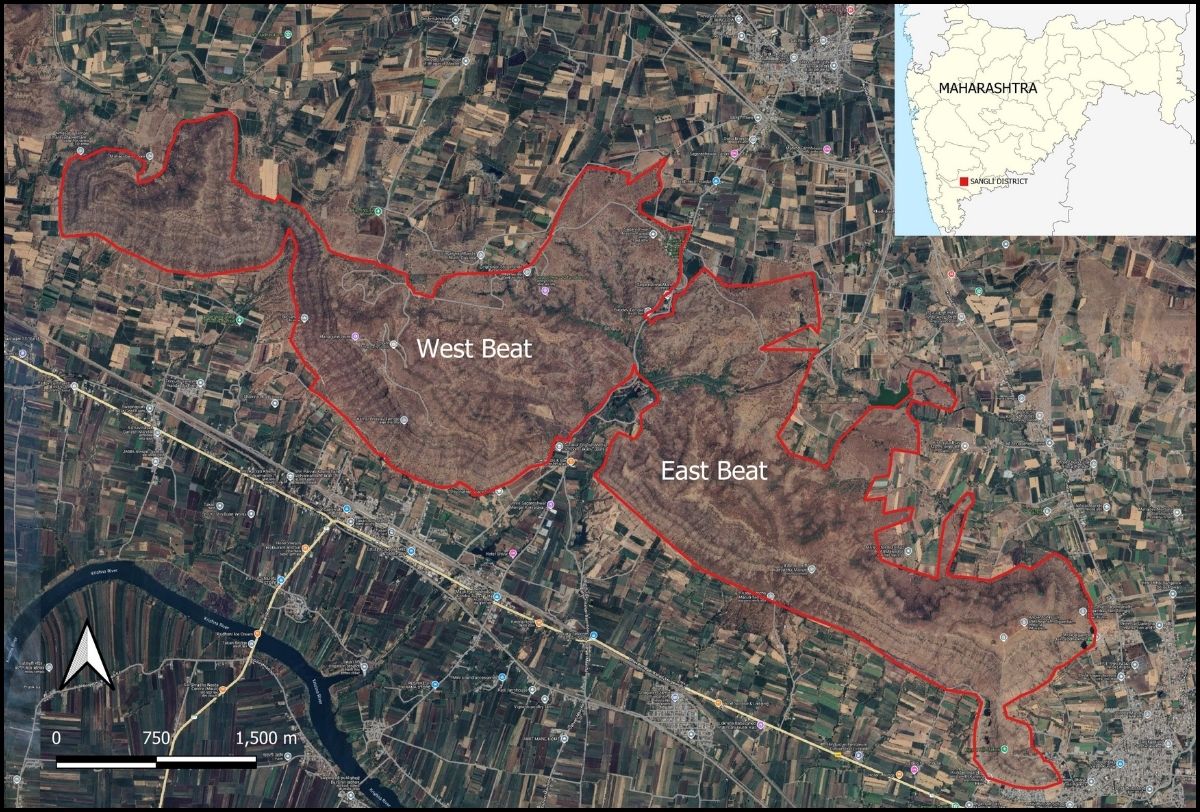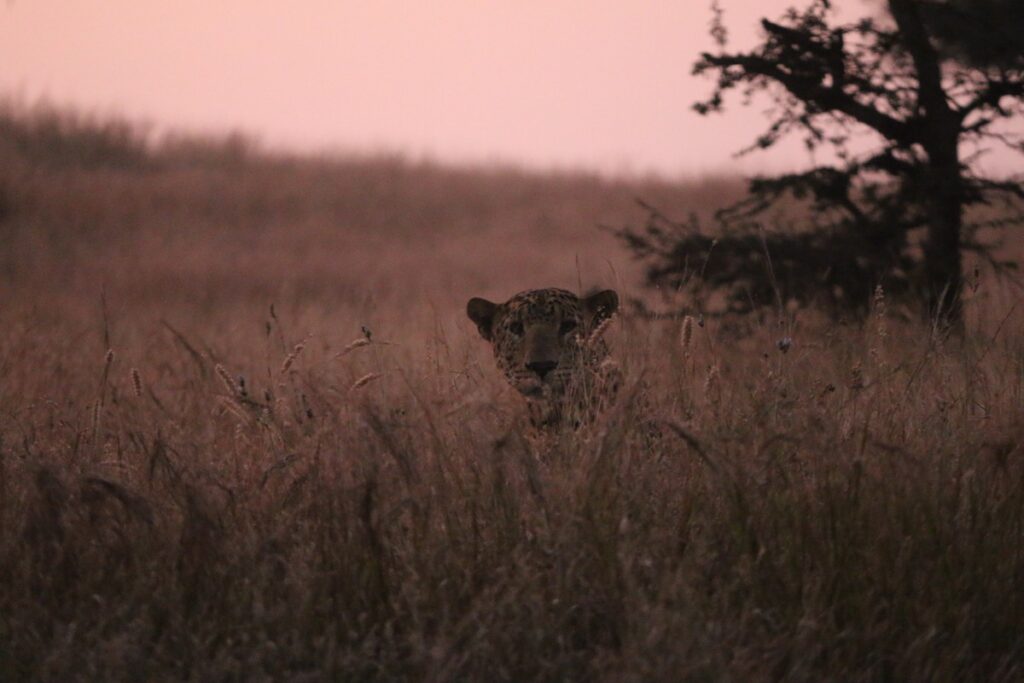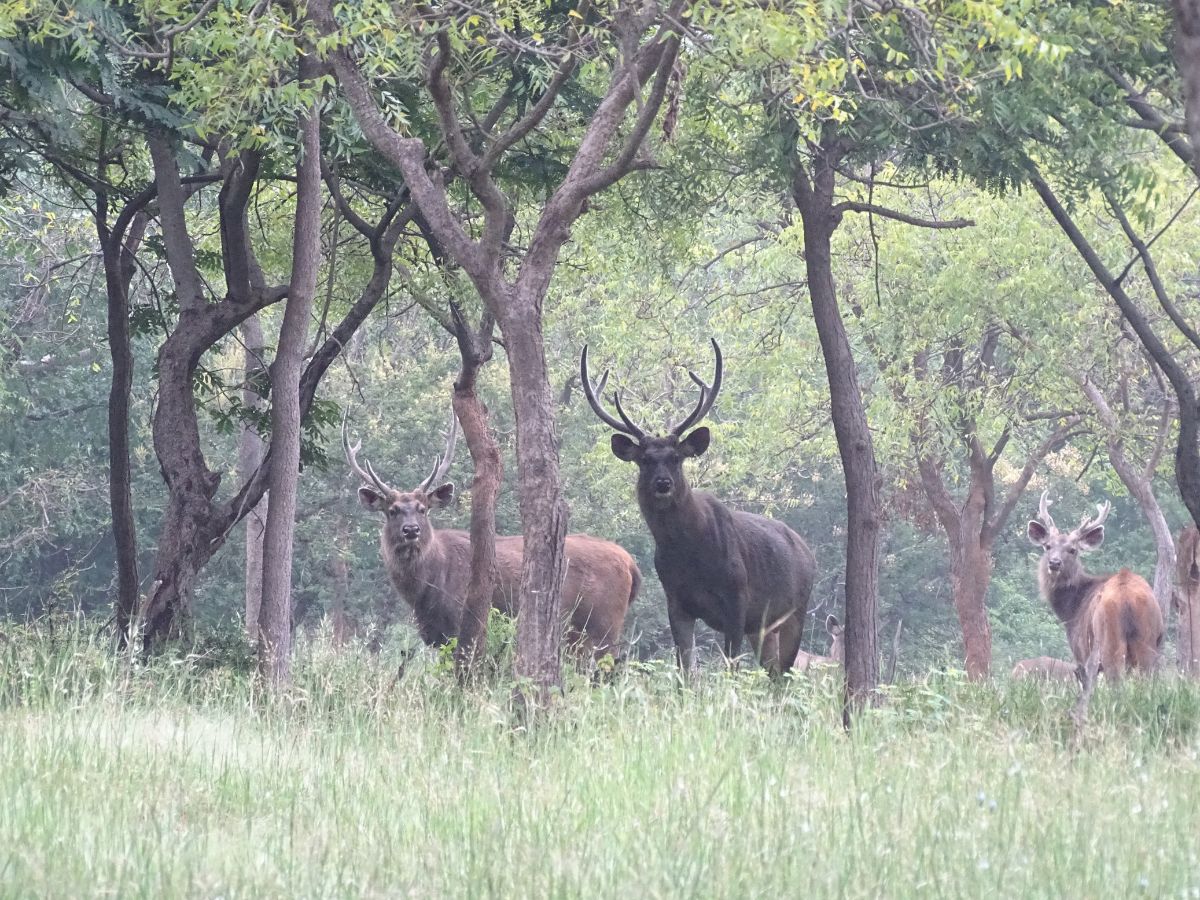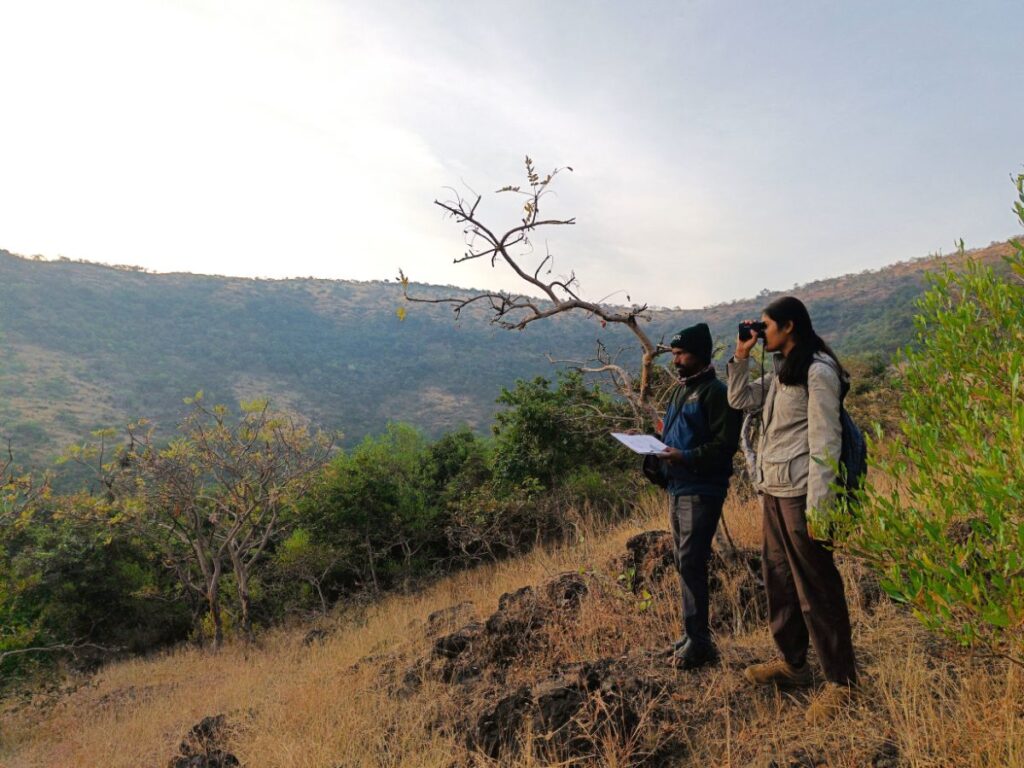Sagareshwar Wildlife Sanctuary (WLS) is a small 10.87 sq. km. Protected Area in Sangli district of Maharashtra, and situated about 50 km. from Sangli city. However, what makes this little sanctuary unique is the fact that it is often dubbed as an entirely “man-made” wildlife sanctuary. Why so? Well, the hills around Sagareshwar used to be a hilly open savannah habitat heavily grazed by cattle. Unfortunately, much of the larger mammalian wildlife that would have once resided in such habitats had almost vanished by the late 1970s. Then, in the early 1980s, a local environmentalist, D.M. Mohite, was inspired to create a wildlife sanctuary around his village after visiting other forests, such as Tadoba. Since awareness about the uniqueness of open natural ecosystems (ONEs) was still very nascent back then, and wildlife was almost exclusively associated with dense forest habitats, a massive effort was undertaken to plant the hills around Sagareshwar with Glyricidia trees, along with a few other plants. Eventually, a “plantation-forest” was raised. Then, cheetal and sambar deer were introduced into this man-made forest (initially a small enclosure), and the entire area was notified as a wildlife sanctuary in 1985. Thus was born Sagareshwar Wildlife Sanctuary. Due to the introduced deer species, the small size of the sanctuary, and the planted nature of the newly raised forest, this sanctuary also began to be referred to as Sagareshwar deer park (which technically was a small portion of the larger sanctuary that had been set aside to house the introduced deer for acclimatisation and release into the forest).

Location map of Sagareshwar WLS. Image credit: WCT
Over the years, due to suitable forested habitat and protection, there was a dramatic rise in the cheetal and sambar populations in this little sanctuary. Around a decade ago, more than 70 percent of the sanctuary was fenced to prevent crop depredation by these deer. Recently, Wildlife Conservation Trust (WCT) was approached by the sanctuary authorities to conduct a technical study in the sanctuary to estimate the density and abundance of these two species and approximate their population size. Consequently, mixed teams of WCT staff, forest staff, and trained volunteers walked multiple transects, sampling for wild herbivores. Over the course of eight days, they invested close to 40 km. of walking effort to collect observational data on the wild herbivores of the sanctuary. While the team, as expected, sighted dozens of cheetal and sambar, the surprise highlight of the survey proved to be the unexpected sighting of a leopard!

The leopard sighted by WCT survey team at Sagareshwar. Image Credit: Abhilash Chakraborty
The analysis of the data threw up interesting results. Observed group sizes (or herds) of sambar varied from one to 17 individuals, whereas for cheetal, group sizes varied from one to 45 individuals. In groups observed with young animals, the number of young varied from one to five for sambar, while for cheetal, it ranged from one to nine young animals. After running multiple statistical models, sambar density in Sagareshwar WLS was estimated to be highly robust at 49.50 (±10.43) individuals per sq.km., with an estimated population of 536 (±113) individuals. On the other hand, the cheetal density was even higher. However, unlike the sambar that occurs in both the western and eastern beats of the sanctuary, cheetal occurs only in the western beat of the sanctuary. Consequently, their overall abundance was lower than that of the sambar, standing at an estimated 295 (±105) individuals. These findings also explain the presence of predators such as leopards, who would have plenty of prey to sustain themselves.

A herd of sambar seen at Sagareshwar WLS by the WCT team. Image Credit: Girish Arjun Punjabi
It comes as no surprise, then, that this little sanctuary is now being used to supplement the wild herbivore population in the Sahyadri Tiger Reserve through sustained translocations. Spread over an area of 1,165.56 sq. km and spanning four districts (Satara, Sangli, Kolhapur, and Ratnagiri), Sahyadri Tiger Reserve is the northernmost Tiger Reserve in the Western Ghats and is afflicted with low prey density, which has emerged as a major constraint for tiger recovery in the reserve. Thus, restocking the prey base with sambar and cheetal is a critical step towards securing the future of tigers in the Sahyadri landscape, and this is where Sagareshwar has emerged as a key piece of the tiger recovery puzzle in the Sahyadri.

WCT field team carrying out an ungulate line transect survey at the Sagareshwar WLS. Image Credit: Girish Arjun Punjabi
Sagareshwar is thus a testament to the potential of even the smallest Protected Areas creating a significant impact when sustained conservation efforts and community support join forces.
About the Author: Raza Kazmi is a conservationist, wildlife historian, storyteller, and researcher. He is a Conservation Communicator at WCT and writes in both English and Hindi languages. His writings appear in national newspapers, online media houses, magazines and journals, and various edited anthologies. A recipient of the New India Foundation Fellowship for 2021, he is currently writing a book tentatively titled ‘To Whom Does the Forest Belong?: The Fate of Green in the Land of Red’.
Disclaimer: The author is associated with Wildlife Conservation Trust. The views and opinions expressed in the article are his own and do not necessarily reflect the views and opinions of Wildlife Conservation Trust.
Your donations support our on-ground operations, helping us meet our conservation goals.
Related Links
- Wildlife Week – We Are All In This Together
- The Hunters, The Strategists and The Prey
- An encounter with Wild Dogs – the Whistling Hunters of Bor WLS
- Media Coverage
- Protecting Madhya Pradesh
- WCT Brochure
The post The Sagareshwar Story – an experiment in rewilding appeared first on Wildlife Conservation Trust.





